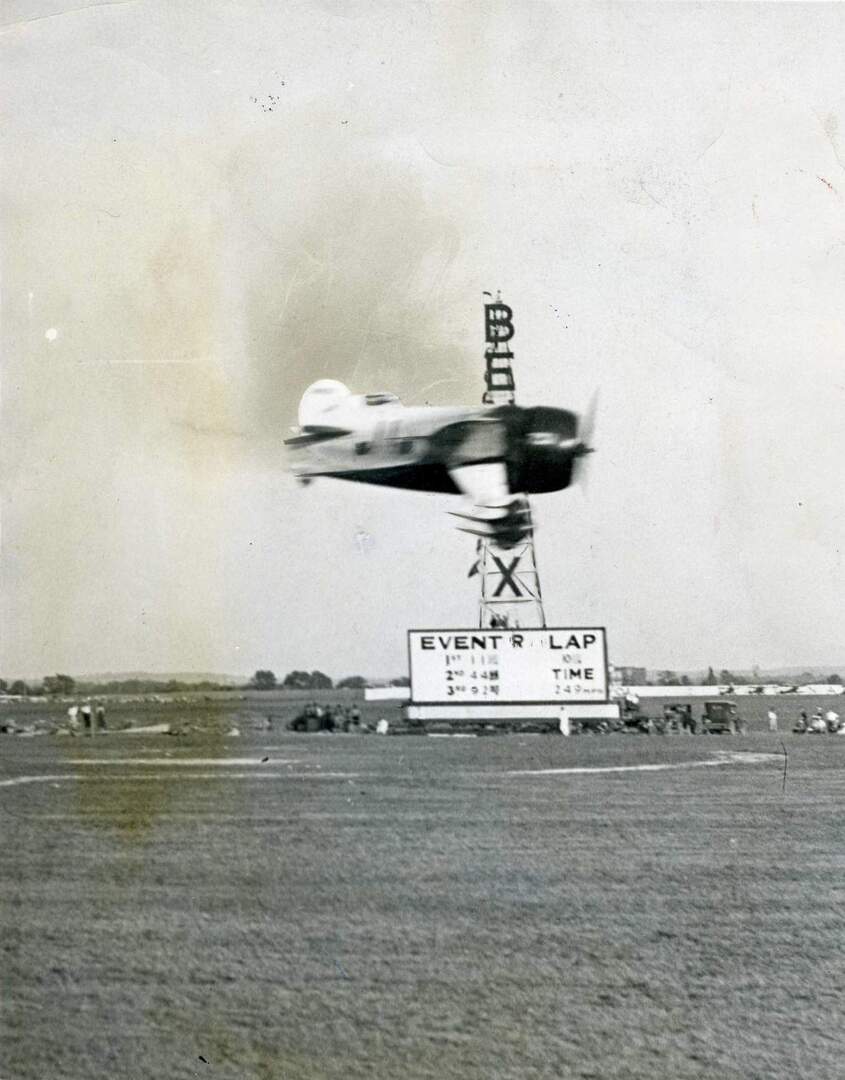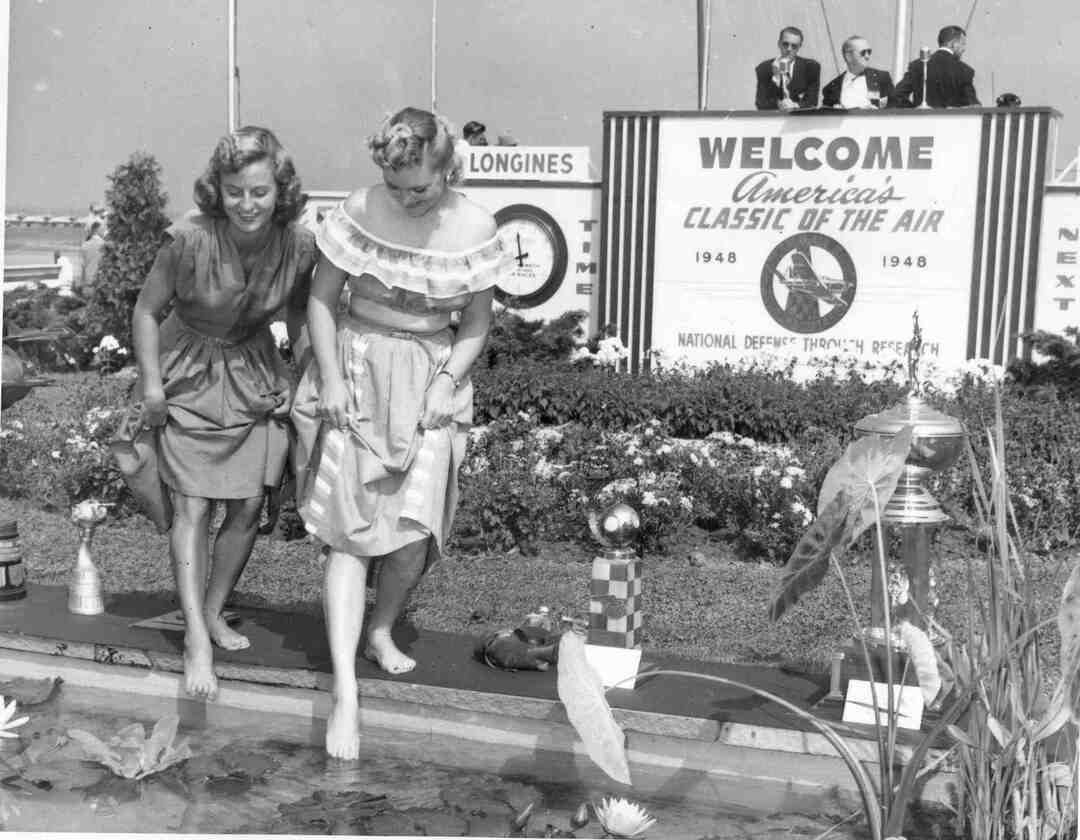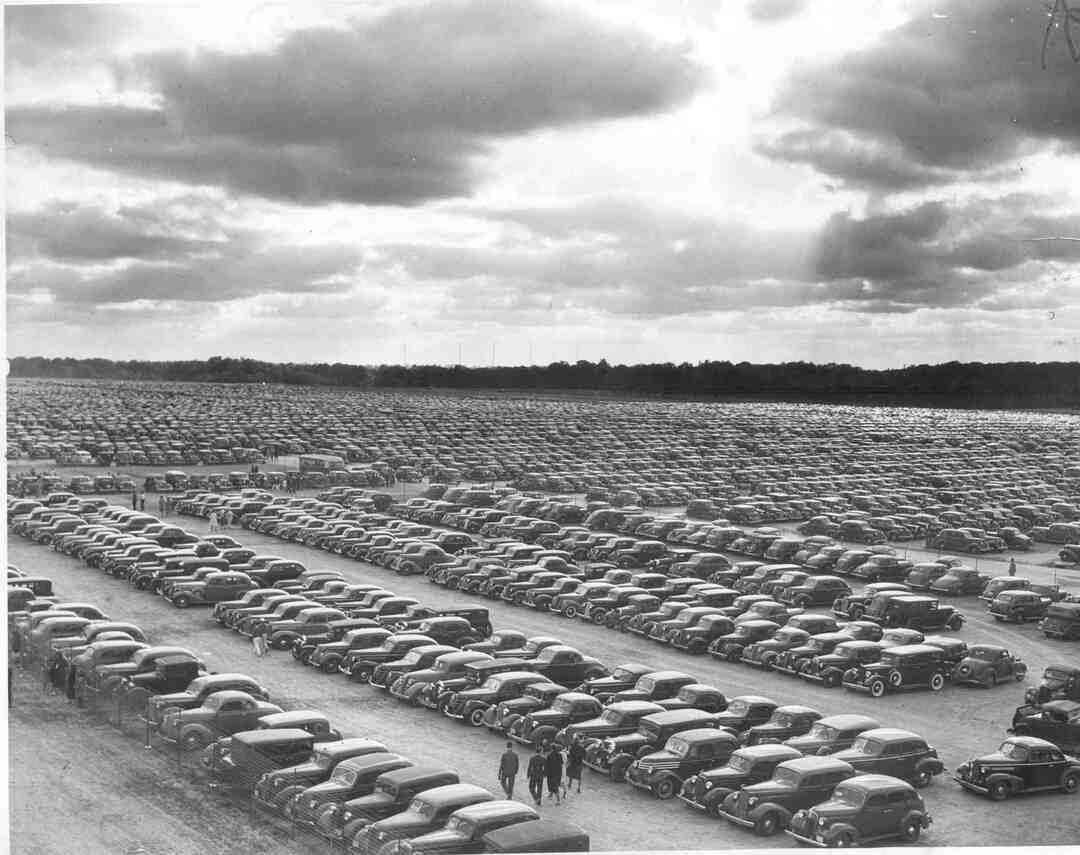Cleveland National Air Races

The National Air Races finally came to Cleveland Municipal (now Cleveland-Hopkins International) Airport in 1929. Local businessmen Louis W. Greve and Frederick C. Crawford played a big role in bringing the event to Cleveland. Both men were involved in the aviation industry -- then thriving in Cleveland -- with Greve's Cleveland Pneumatic Tool Company making landing gears and Crawford's Thompson Products (later TRW) involved in the production of aircraft engine valves.
The Cleveland National Air Races of 1929 kicked off with a grand parade down Euclid Avenue watched by over one hundred thousand spectators. A $3 million aviation exhibit opened at the Cleveland Public Auditorium at the same time. Meanwhile, the event's organizers built a permanent grandstand at the airport which could seat 50,000 spectators. Overflow crowds (a common occurrence) were accommodated with temporary stands. The ten-day event, held in late August and early September, proved to be wildly successful, and the Air Races returned to Cleveland in 1931, '32, '34, '35, '37, '38, '39, '46, '47, '48, and '49.
The most popular parts of the Air Races were the fast-paced, closed-course races. The 1929 Thompson Trophy Race, for example, featured planes flying five laps around a ten-mile circuit. Cross-country races, timed to end in Cleveland during the Air Races, were also held. The inaugural Powder Puff Race of 1929 featured women competitors (including Amelia Earhart) flying from California to Cleveland. Blimp rides, parachuting competitions, and military demonstrations kept the fans entertained between races.
The dangerous nature of aviation at this time was surely part of the appeal that drew crowds to the Air Races. Indeed, crashes were common, and fatalities sometimes occurred. The closed-course races in particular, with pilots jockeying for position mid-air, could be incredibly dangerous. In 1949, Bill Odom crashed his P-51 WW II fighter plane into a house in Berea during the Thompson Trophy Race, killing himself and a mother and child inside. Afterwards, Berea and other cities near Cleveland Airport passed laws barring races from being held in their airspace. For this and other reasons, 1949 would be the last National Air Race held in Cleveland. In fact, the event as a whole went on hiatus after the crash before being revived in Reno, Nevada in 1964. The Cleveland National Air Show began that same year at Burke Lakefront Airport, though its focus was on aviation demonstrations, and races only occurred infrequently.
Video
Images








